All photographs by Nell Farrell while living in San Felipe del Agua, Oaxaca, Mexico. See project statement.
Six different evenings they passed through the Stations of the Cross in the streets of San Felipe: from Jesus being condemned to death, through his carrying of the cross, to being crucified and finally taken down and buried. In San Felipe they don’t have an actor play Jesus, but instead shoulder his likeness in plaster through the streets, stopping fourteen times to listen to the priest under reproductions of paintings of the stations.
The evening that I attended, the theme was children. The catechism teachers were there and lots of kids. The teachers lined them up, organizing them so that one child held an image of each station. At every stop Father Salvador would address a related topic: the first was abortion; another, mistreated children and orphans, both actual and by neglect; then mothers who had lost their children or hadn’t been able to conceive. By turns his discourse seemed to me judgmental and dogmatic, then caring and highly moral.
We began at the cross on top of a hill beyond town. The locations where we were to pause and observe a station had been marked: the first a spray-painted cross on a rock, the next a cross of ashes in the dirt. Each was a bit more elaborate than the previous, as we passed from dirt roads to paved, until we reached tables set up with tablecloths, flowers, and a Christ as our marker. At each station the next child would come forward and his or her framed print would be affixed to the top of the pole.
Lashed to a table-made-litter, Christ sustaining his own cross was borne first by teenagers—in school uniforms and backpacks—then heads of families. They rotated out often and seamlessly. Our walk began at five p.m., and when we arrived at the churchyard doors it was near dark. Statues of Mary and Jesus awaited us, silent, hoisted above the shoulders of four women and four men, the women luminous in their elegant traditional dress all white. As the sea of humans entered the church like so many shadows, Mary and Jesus floated, larger than life, above them.
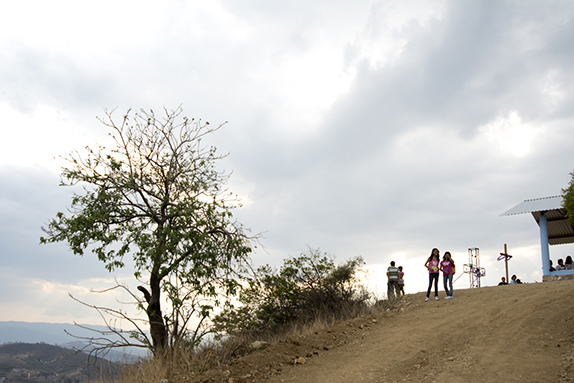
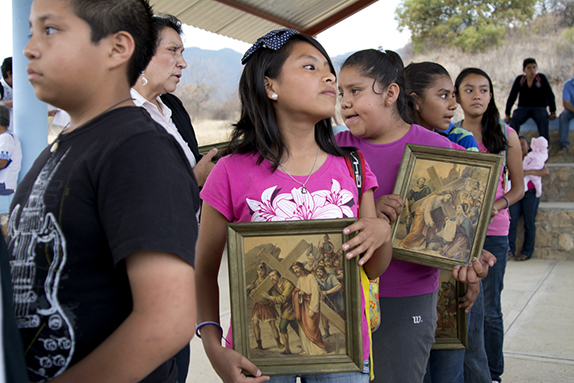
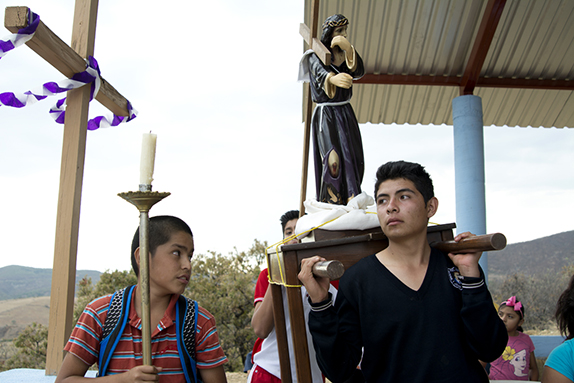
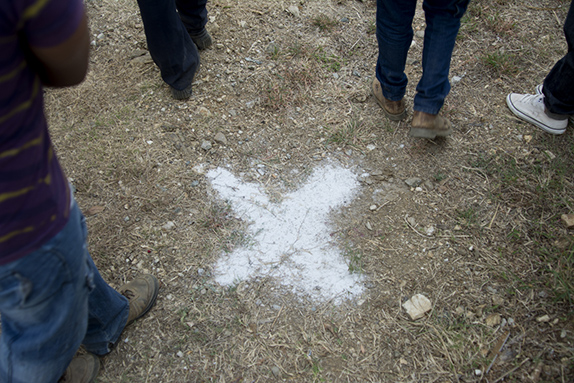
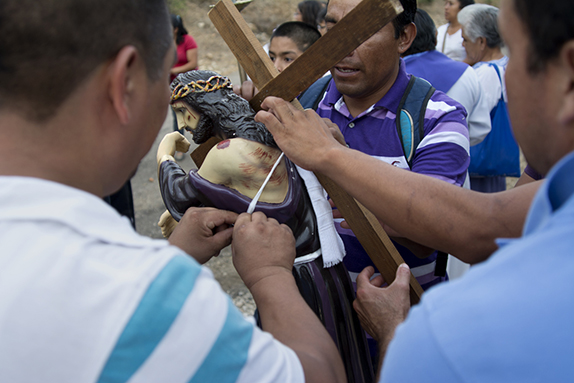
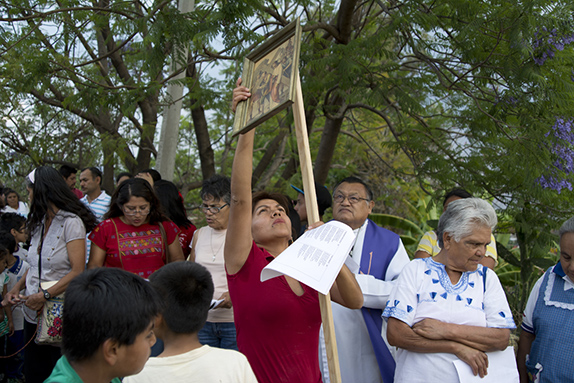
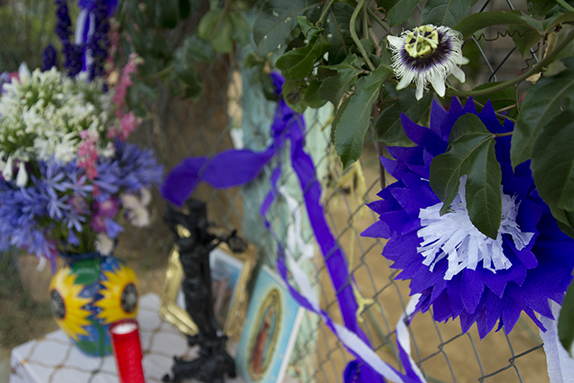
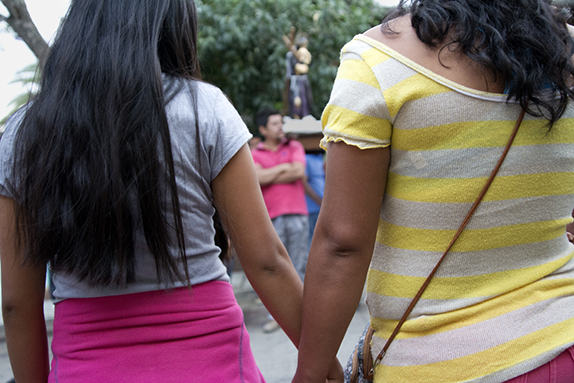
Project Statement: The del Agua in “San Felipe del Agua” refers to the fact that a portion of the water from which the colonial Mexican city of Oaxaca lives, flows down from the gem green hills behind what was once a town but now exists as the edge of the larger city: lambs, donkeys, tropical flowers, and a half-hour bus ride to the center of a cosmopolitan metropolis. Those born in San Felipe have a separate set of rights and responsibilities to the community than those who move here. Those who move here tend to bring wealth, and often live behind high walls and drive dark-tinted SUVs.
My family and I lived in Mexico for one year and chose San Felipe because we found a wonderful school there for our children. Having grown up in New Mexico I have always been attracted to Catholic imagery and Guadalupe, growing up atheist I have always been fascinated by faith. And so, in Mexico, I photographed our neighborhood parish.
The photo essays resulting from this study will be published in the New Mexico Mercury from October 2014 through June 2015, roughly once a month on the date corresponding to the event photographed one year previous.

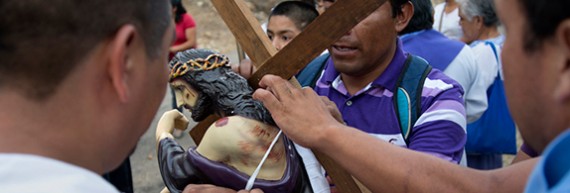


Responses to “Via Crucis”